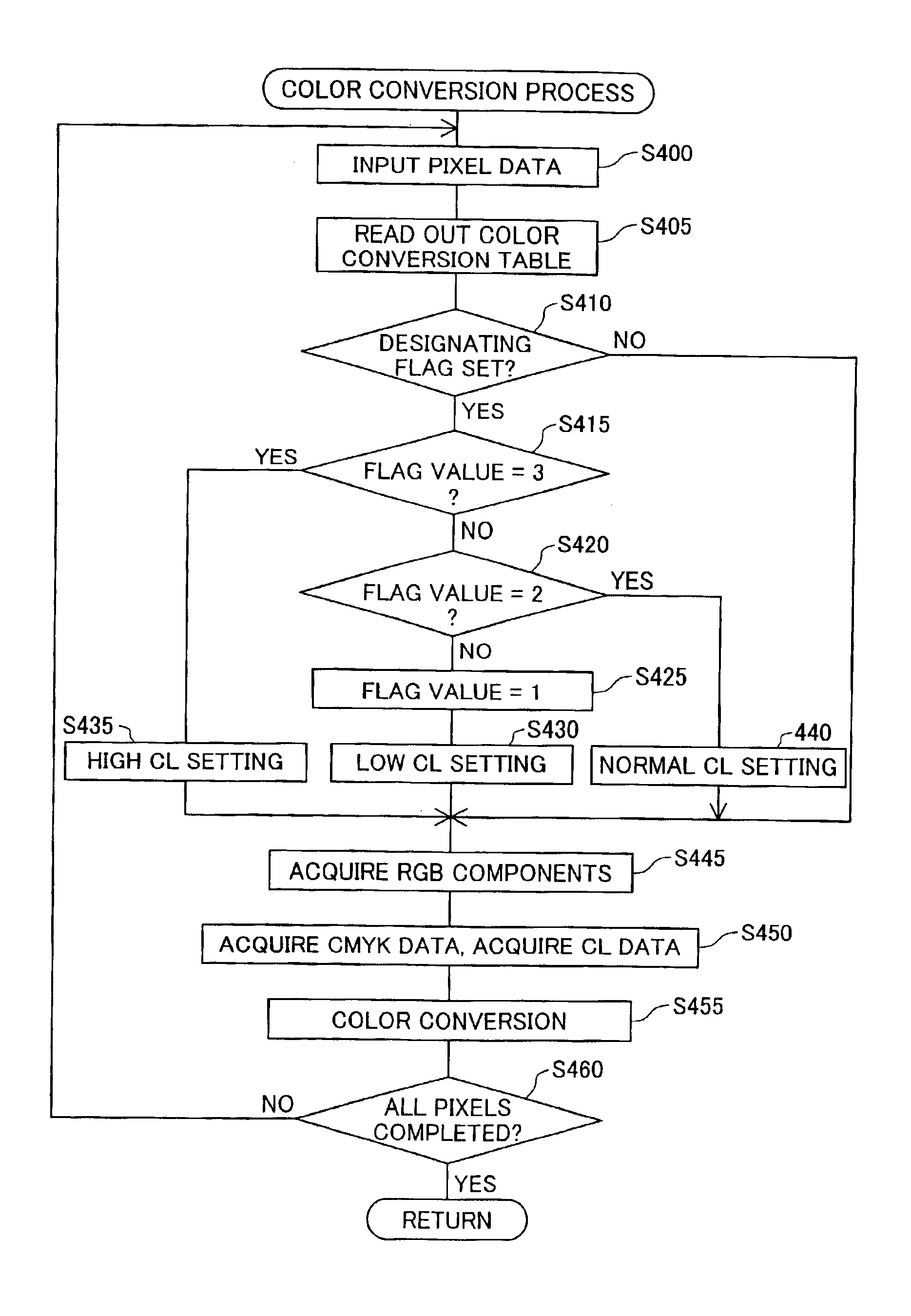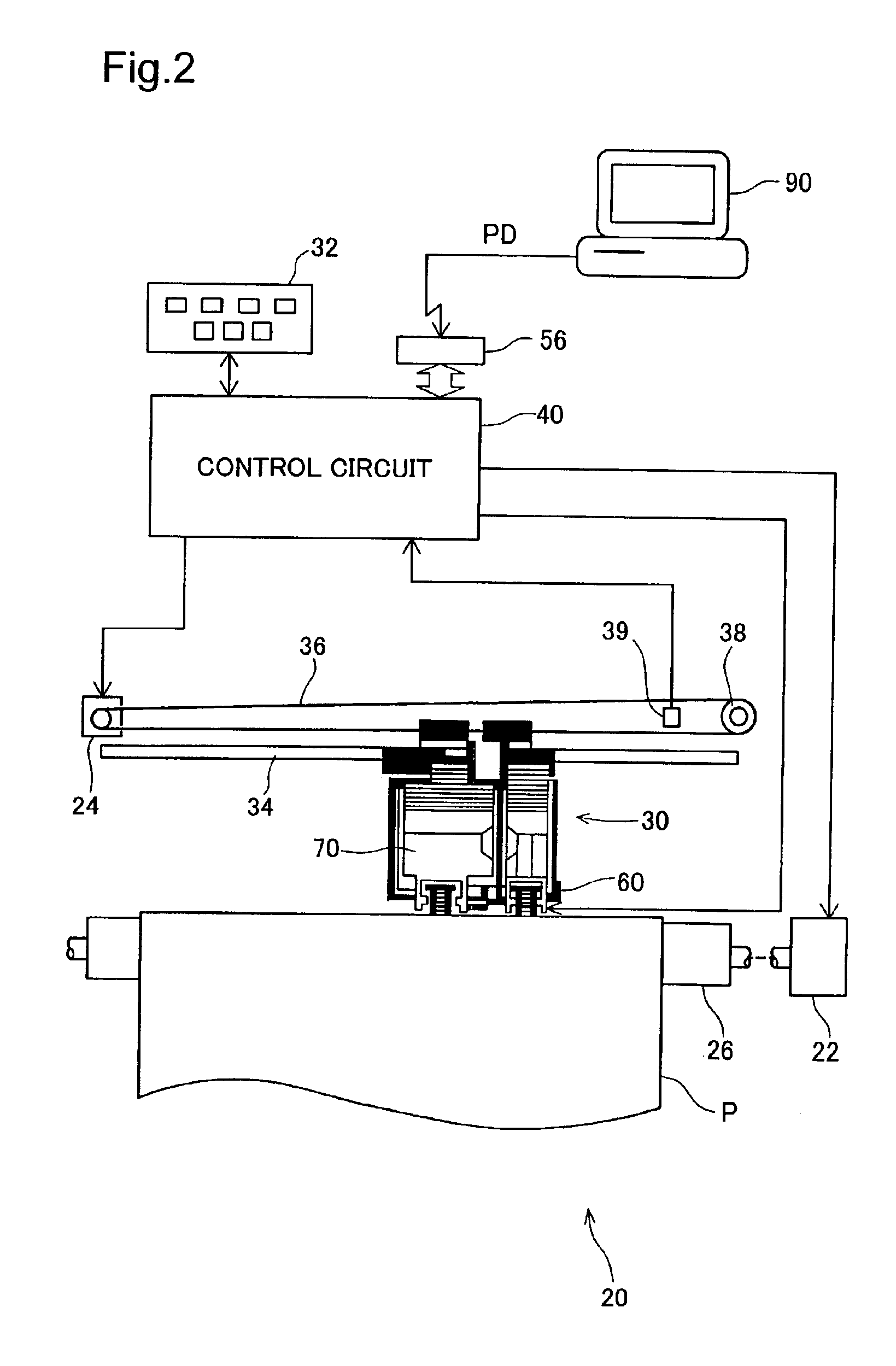Image printing using print quality enhancing ink
a printing device and print quality technology, applied in printing and other directions, can solve the problems of difficult to achieve the desired color, ink is absorbed by the printing medium, and the person viewing the image experiences unpleasant impressions of different levels of gloss in different areas, so as to improve the image quality of the print
- Summary
- Abstract
- Description
- Claims
- Application Information
AI Technical Summary
Benefits of technology
Problems solved by technology
Method used
Image
Examples
first embodiment
B. First Embodiment
B1. Example 1 of First Quality Adjusting Mode:
FIG. 6(a) shows the relationship between the discharged amount of colored ink VS and the discharged amount of quality enhancing ink VCL, and FIG. 6(b) shows the relationship between the discharged amount of colored ink VS and the total discharged amount of colored inks and quality enhancing ink VT (=VS+VCL). The horizontal axis represents the discharged amount of colored inks VS, and the vertical axis represents the discharged amount of ink indicated by the legends.
The ink amount is given as a percentage, where 100% represents the discharge of any ink on all pixels. When it is possible to form dots of different size in a single pixel area, the actual ink amounts discharged should be also accounted for. The amount of discharged colored inks VS is the total amount for various colored inks. As such, when several different types of colored inks are ejected in the same pixel position, the amount of discharged ink VS or VT w...
example 7
B7. Example 7 of First Quality Adjusting Mode:
FIGS. 12(a) and 12(b) show the relationship between the discharged amount of colored ink VS and the discharged amount of enhancing ink VCL in Example 7 of the first quality adjusting mode.
The enhancing ink amount VCL is set so that the total ink amount VT is at least a first predetermined non-zero value A. In areas where the colored ink amount VS is lower than the first predetermined value A, the enhancing ink amount VCL is set to a fourth predetermined non-zero value D. The fourth predetermined value D is greater than the first predetermined value A. Thus, even when the printing medium has low gloss, the enhancing ink amount VCL has the fourth predetermined value D in areas where the colored ink amount VS is low, allowing differences in gloss to be consistently minimized. Furthermore, the enhancing ink amount VCL is constant in areas where the colored ink amount VS is lower than the first predetermined value A, thus simplifying the cont...
example 1
B8. Example 1 of Second Quality Adjusting Mode:
FIGS. 13(a) and 13(b) show the relationship between the discharged amount of colored ink VS and the discharged amount of enhancing ink VCL in Example 1 of the second quality adjusting mode.
The enhancing ink amount VCL is set so that a VCL value for the colored ink amount VS of about 0% is lower than a VCL value for the VS value of about 100%. This reduces unevenness of coloring in image areas due to a difference in the colored ink amount VS. In areas where the colored ink amount VS is low, a small amount of enhancing ink is ejected to enhance color development, thereby conserving the enhancing ink amount VCL. The smaller amount of quality enhancing ink CL will prevent the printing medium from wrinkling, prevent the ejected ink from taking a longer time to dry, and conserve the quality enhancing ink. The enhancing ink amount VCL is also set so as not to decrease as the colored ink amount VS increases in this example. It is thus possible ...
PUM
 Login to View More
Login to View More Abstract
Description
Claims
Application Information
 Login to View More
Login to View More - R&D
- Intellectual Property
- Life Sciences
- Materials
- Tech Scout
- Unparalleled Data Quality
- Higher Quality Content
- 60% Fewer Hallucinations
Browse by: Latest US Patents, China's latest patents, Technical Efficacy Thesaurus, Application Domain, Technology Topic, Popular Technical Reports.
© 2025 PatSnap. All rights reserved.Legal|Privacy policy|Modern Slavery Act Transparency Statement|Sitemap|About US| Contact US: help@patsnap.com



